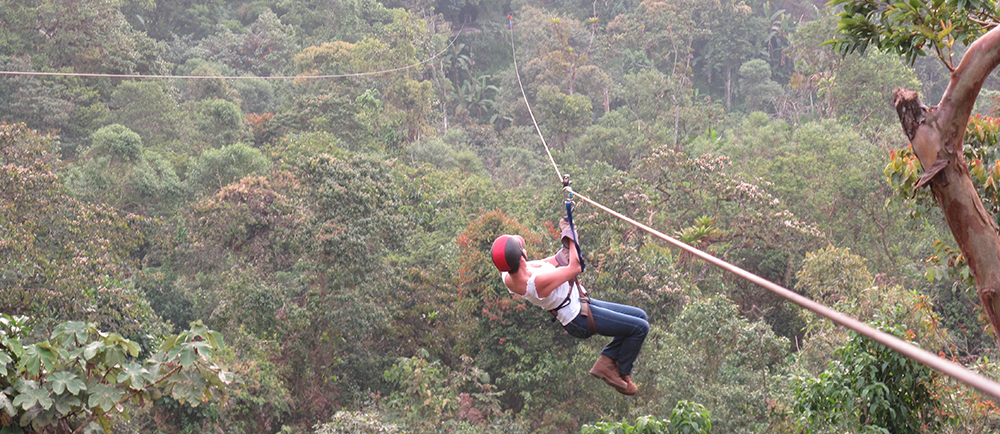
I'm a 45-year-old woman in Ecuador, South America — I live alone and enjoy my work as General Manager of a medium-size manufacturing company. I have a busy schedule and I travel extensively, both within and outside of Ecuador.
At the end of September 2010, I started to feel numbness and tingling in my right arm. I could not keep my arm lifted for more than a minute. A few days after those symptoms started, I awoke with a stiff neck (torticollis) and couldn't move my head. I thought that I had slept in a bad position, so I took anti-inflammatories for a week. The pain did not go away, and the numbness and tingling in my arm increased. In the middle of October I developed a terrible pain in the thumb of my right hand. I couldn't even work on my computer, as it was too painful.
I visited a neurologist in Quito, and had x-rays that showed problems in my cervical column. I took the recommended medicines and did physiotherapy, but I didn't see any results. Then I visited a spine surgeon and had an MRI that showed a cervical disc compressing the spinal cord. The surgeon proposed spinal fusion, which would require six months to a year of recuperation time — and my neck would not rotate freely anymore.
Since the surgery was such a risky procedure, I decided to search for better options in the United States. I found the Spine Center at NewYork-Presbyterian/Weill Cornell Medical Center and contacted them. They have a Department for International Patients, where someone was assigned to my case and gave me most valuable support throughout the whole process.
I had an appointment with Dr. Roger Härtl, who confirmed the diagnosis: I had a damaged cervical disk. Instead of spinal fusion, Dr. Härtl recommended replacing my damaged disk with a plastic implant. He told me that this procedure was less invasive than spinal fusion, and had better expectations of recovery. I would only need to be in the hospital for 24 hours, and I could return home to Ecuador in as little as eight days after the surgery. He also told me that daily physiotherapy after the surgery would help my recovery.
I understood and accepted Dr. Härtl's recommendation, and a week after the appointment I was in the operating room. The intervention was a great success, and 48 hours after surgery I was walking on my own and was able to carry out my normal daily activities (eating, getting dressed, and taking care of myself). Just 72 hours after surgery I was working several hours a day at my job in Ecuador through the Internet.
The post-surgery inconveniences were exactly what Dr. Härtl had described: There would initially be intense pain in my back and neck, but they would gradually ease as I took my medicine and did my physiotherapy. I also had difficulty swallowing, because the surgery was an anterior cervical surgery, but that also disappeared gradually.
I remained in New York to begin physiotherapy in the hospital. I had about 16 sessions, which were complemented with additional exercises I could do in my home every day. Physiotherapy helped me eliminate the pain and fortified the muscles of my neck and back.
Before returning to Ecuador I had a follow-up appointment with Dr. Härtl, who addressed all my questions and doubts clearly and directly. He continues to give me support today and answers my questions without delay.
Now that I'm back in Ecuador, I live my life the same way I did before September 2010: I work 10 to 12 hours a day and I drive two hours a day. I take intercontinental flights often, without difficulty. Of course, I'm a good patient: I have followed all the medical instructions strictly and I practice one hour of physiotherapy a day. For the first three months after surgery I didn't lift more than 10 pounds. Even today I don't lift more than 20 pounds. I know if I don't follow these recommendations my back and neck would hurt.
Five months after my surgery I toured a tropical rain forest canopy. For one solid hour I slid along 1.7 miles of zip lines — an adventure that's full of adrenaline and emotional excitement. I didn't felt any pain or discomfort, just pleasure.
Although the risks of spinal surgery had frightened me, my biggest fear had been that my life would change drastically if I made the wrong choice. I had to avoid damage to my spinal cord! I knew I was making one of the most important decisions of my life. I know now that to have had surgery at Weill Cornell's Spine Center, one of the best clinics in the world, performed by a world recognized top surgeon, was the right decision. I feel now totally recovered and ready for my next adventures: paragliding at the beach and indoor climbing wall.